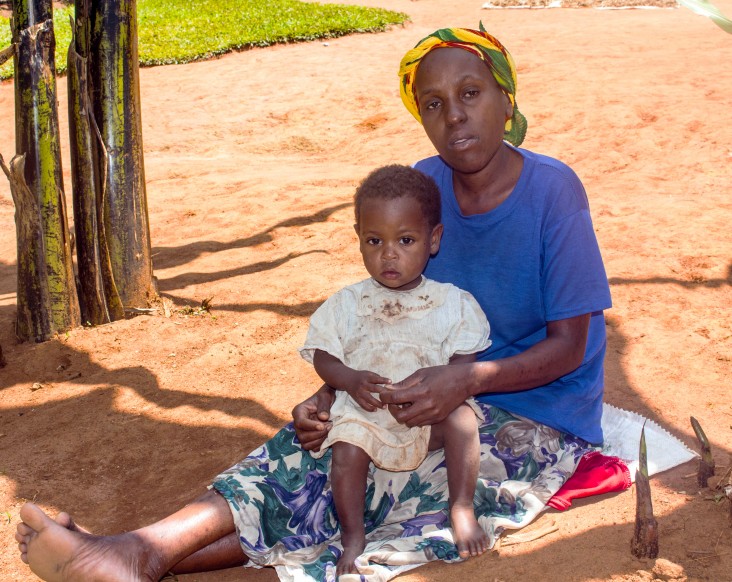Speeches Shim

“If you don’t come soon, you may never see me and the baby alive again!” That is all Nyakato could say over the neighbor’s cellphone to her older sister Beatrice. Nyakato and her two-year-old daughter, Ahabwe, were in the grip of a debilitating illness that was causing both to waste away. Ahabwe was so weak that she could hardly hold her head up.
Nyakato’s husband had recently died from an AIDS-related illness. As a person living with HIV, Nyakato knew her health was a priority and orphaning her remaining children was not an option. Nyakato was prescribed antibiotics at a clinic near her home in rural Southwest Uganda, but she didn’t feel any progress, in fact her symptoms worsened.
“I would feel something grab me in my chest, and then I would cough and cough and all the stuff inside was so bad,” says Nyakato. “I could hardly walk. In the evening I just lay there—I was sure I would die.”
In the bustling city of Mbarara, Nyakato’s sister, Beatrice, heard a message on the radio about TB—that it started with a persistent cough and that people living with HIV were vulnerable to TB. Beatrice thought that perhaps this was the illness attacking her sister and niece. Beatrice figured that the Mbarara Regional Referral Hospital might be able to save Nyakato. It is one of the 235 TB diagnostic and treatment centers supported by the USAID RHITES-SW project.
The family pooled resources to transport Nyakato to the hospital, where she was diagnosed with TB and referred to Rwashamaire Health Centre IV, which is close to her home and is also supported by the project. The hospital clinician used GeneXpert MTB/RIF to confirm her diagnosis. Nyakato started her medication and her health rapidly improved. The clinicians also started the tracing process, figuring out who in Nyakato’s life might be exposed to TB.
Sure enough, her baby, Ahabwe, tested positive. “This was no simple achievement [to diagnose the baby],” says Sister Marion Nahabwe, TB Focal Person. “Little children are harder to diagnose because they don’t cough up sputum easily, and even when they do it’s not enough to test with and you may easily misdiagnose. So we checked her urine, using TB-LAM diagnostics, to screen for active TB.” Now Ahabwe is on her third month of anti-TB drugs.
Recently, Nyakato reached out to one of her friends who has been coughing for a while, urging her to see the doctor and check for TB. She tells anyone who cares to listen about how her life was saved as she watches her baby holding her head high, interested once more in everything around her.
Nyakato is right in her suspicion that they are more people in the community that need to be diagnosed for TB. In 2017, there were about 5000 individuals infected with TB in her region -southwest Uganda. Almost 40% of active TB cases in Uganda are never reported to the national registry; this means many more individuals living with TB are unaware of their status, out of care, and potentially transmitting the bacteria to others.
The USAID Regional Health Integration to Enhance Services in South West Uganda (USAID RHITES-SW) project remains at the forefront of the battle against TB in southwest Uganda. Working with the Ministry of Health, USAID is strengthening diagnosis and treatment skills of health workers to save the lives of co-infected individuals. The project supports 253 TB diagnostic and treatment units, and has increased access to effective TB testing using the GeneXpert from 4,254 In 2015 to 51,203 in 2019. To date the project has also strengthened staff skills and supports the use of the GeneXpert in 26 sites. However, for families like Nyakato’ s who live in hard to reach areas, the project set up a network of 29 motorcycle transporters (hub riders) who pick up samples from over 250 sites located in these areas and take them for testing at GeneXpert hubs. This is increasing access to effective TB testing and treatment in rural communities.

Comment
Make a general inquiry or suggest an improvement.